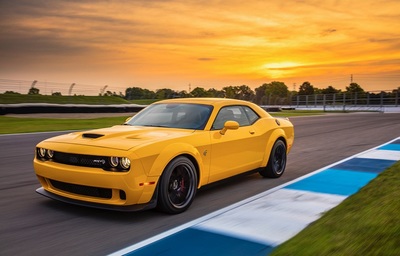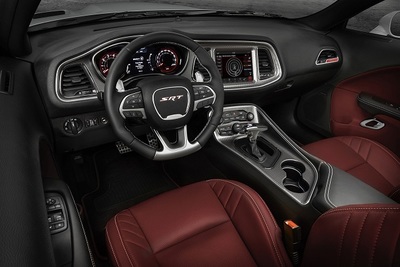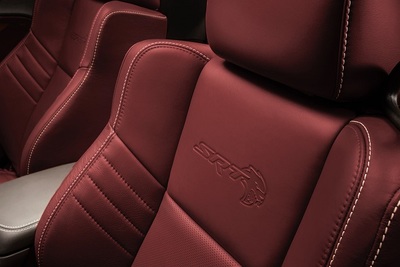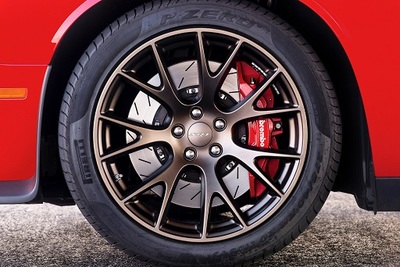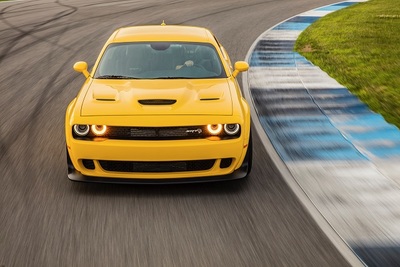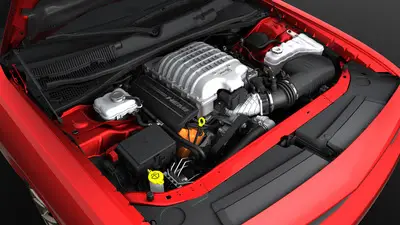One Hour In A Hellcat - 2019 Dodge Challenger SRT Hellcat Review By Thom Cannell - It's E15 Approved +VIDEO
One Hour in HELLcat...Or, how to get out of Dodge in a Dodge
By Thom Cannell
Senior Editor
Michigan Bureau
The Auto Channel
You’d expect every journalist who writes about automotive things, you know, cars, trucks, crossovers and SUVs to be an expert driver, able to fully describe the nuances of ride and handling, as well as evaluating telematics, safety systems, exterior design and whether the interior is suitable for a college dorm or C-level suite.
Unfortunately, that’s not always accurate, particularly the driving skills part. Fortunately, MAMA (Midwest Automotive Media Association) offers its member journalists an annual opportunity to build basic skills, or improve advanced abilities, on a closed racetrack with expert instructors in the passenger seat.
FCA, the Dodge and Jeep brands, support this skill-building and offers their best, and most desirable vehicles to be driven as hard as their commercials suggest. Thus, at last year’s event, there were a variety of milder (and more affordable) Dodge Challengers with V6 engines and a “mere” 305 horsepower, a Jeep Trackhawk, a Dodge Durango SRT, some Challenger R/T Scat Pack Widebody’s and a lone SRT Challenger Hellcat. It was mine for a day.
The 2019 Dodge Challenger SRT Hellcat is a revised model with a distinctive dual-snorkel hood that sucks cooler air into its supercharger to boost horsepower to 717. Yes, 717 real American horses and 656 pound-feet of stump-pulling torque. Let’s go through the performance list before luxury; we were there to drive around a racetrack, not to Starbucks.
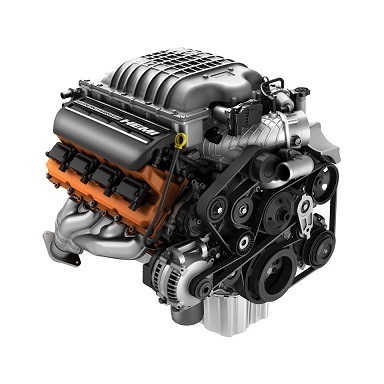 |
Cars meant to go around corners, as is the Hellcat, require better suspension, here fully adaptive with multiple settings from every-day to track-only, six-pot Brembo brakes (lots more about them later), something called Torque Reserve, and paddle shifters.
For drag racing, not part of our day of trials, there’s Launch Assist, Launch Control, Line Lock for off-the-line speed. All the technology is controlled via a large, 8.4-inch Uconnect touchscreen Navigation/Telematics display. We, there to improve our skills, set the suspension for Track, the full safety suite of stability controls to Track, not Race, and the engine power to Sport (we found it shifted better—a bit softer—on the track. Perhaps Race is better for the drag strip).
While a six-speed manual is available, our Hellcat had FCA’s 8HP90 eight-speed automatic. Frankly, while a manual is fun, you have a better opportunity enhancing your driving skills with an automatic. It’s one less distraction intrude on building racing skills. Oh, my personal car has a six-speed manual.
Viewed at rest or on the track, Challenger remains an iconic American muscle car, now with wide 20x9.5” SRT signature wheels and, optionally, a satin black spoiler. Inside, all Challengers have three seat choices beyond standard Houndstooth cloth (Hellcat has a rear seat delete option, by the way), with Nappa leather and embroidered Alcantara, or Laguna leather, or Laguna leather with Alcantara and an SRT Hellcat embossed logo. There’s an available Alcantara Appearance Package and the Italian luxury material is grippy and robust. All have a signature leather-wrapped, flat-bottom steering wheel, gauges outlined in red with a functional 200 mph speedometer and an SRT Hellcat badge.
Sliding into the Hellcat for the first time, I noticed only that the black leather seats were very heavily bolstered, that I needed to set pedal-to-hip distances, and the same for steering wheel angle. Then I reviewed the settings under the Custom menu for power—yep’, set on 717 horsepower, Track steering effort, Track chassis dynamics, Track stability technology. Then we rolled, we being an instructor and I. After all, it was a school and the instructor was there to help me improve.
Easing out of the pits onto the pavement, my first impression was of too-easy steering effort. I got used to it, but would have always enjoyed more heft. That nit disappeared as we approached the first braking point, braking very hard, and then turning into the corner.
From this point I could describe Gingerman Raceway near South Haven, Michigan in detail, how I learned—more like attempted to learn—to master the extremely powerful Brembo brakes, or how on one lap I hit a top speed of 128 mph (top speed is listed as 199!) Let’s take a different tack, more about what we were there to learn, and how you could apply some “racing” techniques and knowledge.
On my 68-mile commute from home to office there are eight corners. Really. That’s where the fun is. Every day I, and you, can apply the same racing techniques that we were learning.
First, at what point will you apply the brakes, and how hard? After figuring that out, your brain has a marked place at which to release the brakes and begin turning into the corner. Your next task is to look into the corner to where you want the car to go, the apex. It’s like basic Driver’s Ed, “look where you want to go”.
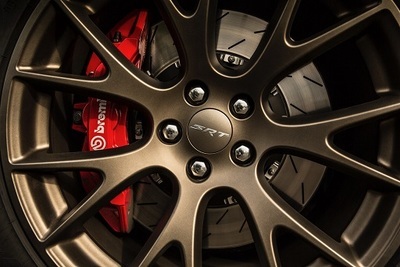 |
After you’ve picked the spot in the corner you want to touch with your inside tire your brain has its second data point and your job is to pick a third spot, where you wish to exit the corner.
In racing terms, “track in, track out, eyes ahead”. Of course, much of this is nonsense in a slow-traffic 90° turn. Or is it? Even there, you can start as far to the left, or right, as possible, pick up the corner’s apex, and pick up your track out. (But, its more fun on freeway ramps, eh?)
That’s the point of learning, to become better at all of these basic skills, taking them from 101-level as far into post-graduate work as you, or I, can. In the case of the Hellcat, there’s even more to learn, and it is the same applied physics as any vehicle—mass in motion.
Newton’s law of conservation of energy says the faster you go, the harder it is to stop. It also says if you’re headed straight, it will be problematic to change direction. With 717 horsepower, a top speed nearly 200 miles per hour and a weight over two tons, physics becomes fun. Maybe less so for the engineers who have to figure ways to mitigate real laws?
Back to heading into turn one.
Pressing the brakes to slow from nearly 100 to a guesstimated 50 mph in six car-lengths requires massive brakes. Hellcats’ are over 15-inches in diameter and ventilated to dissipate heat (back to physics, brakes convert linear motion into heat. Got that?) and calipers with six built-in cylinders (pots) to press the brake pads hard onto metal discs. It requires large tires with solid grip to change direction while the laws of motion try to maintain a straight line, and then power to regain forward motion.
Hellcat gets its power using forced induction—a supercharger—to force more air and fuel into the cylinders. What’s surprising is that 717 horsepower doesn’t feel that different from 500 if applied smoothly. To say a Hellcat gathers speed quickly would be stupidly understated.
So it went in little sessions divided into 20-minute segments, followed by a chance to review opportunities for improvement. Could I brake earlier, accelerate harder or softer, or turn in at a different point? Each offered compromises that sometimes worked well, sometimes not. Could concentration affect lap times? Oh, hell yes. And could being smooth make the car happier, more able to accomplish what was asked? It could, it will, it does.
What I took away was that every day I, and you, could refuse to take driving for granted.
We can look further ahead; keep more reaction time (distance) between our vehicles.
We might even move the steering wheel more smoothly; check the apex of corners and entry ramps and track-in, track-out.
We could choose to become better drivers.



